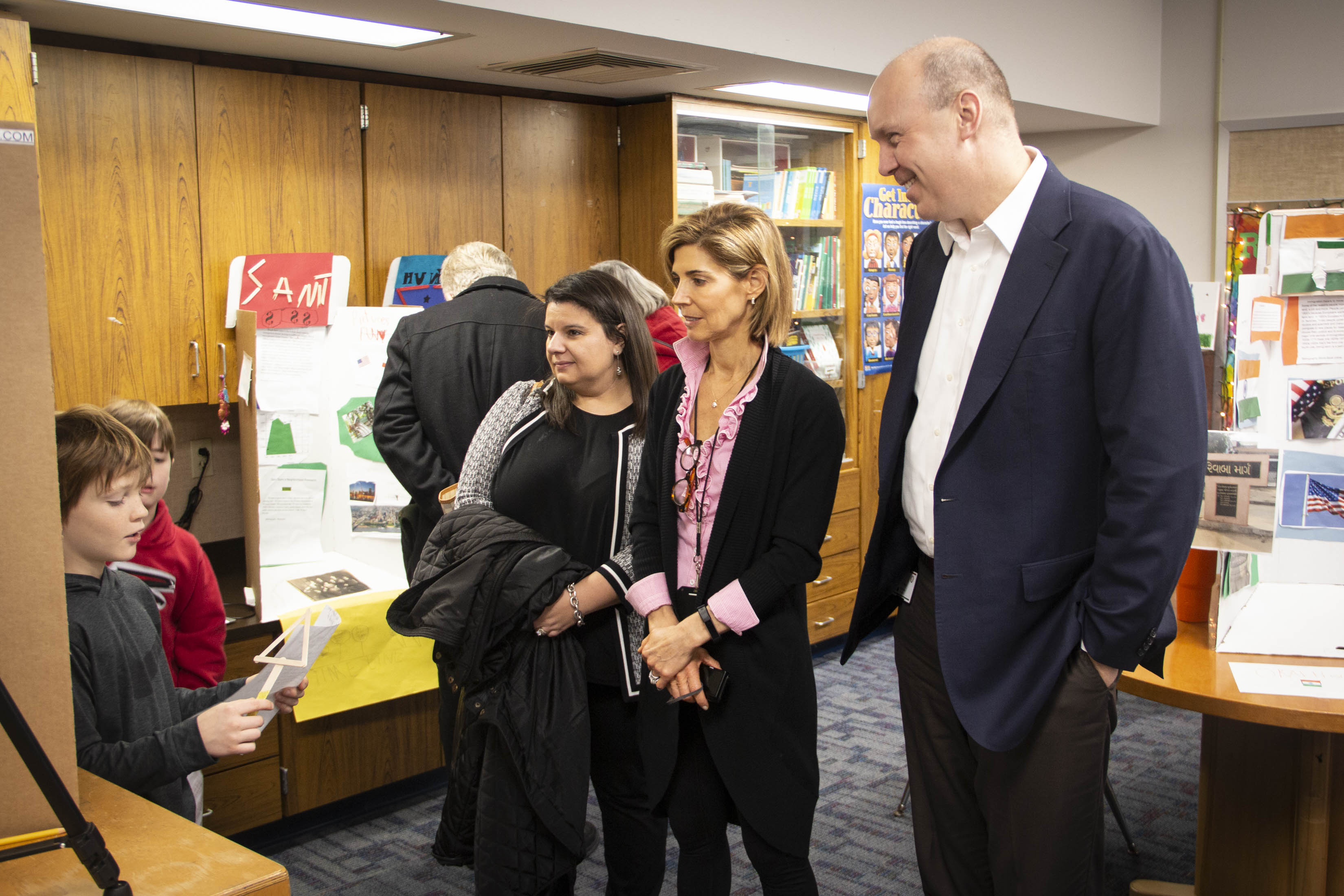Yesterday morning, I had the privilege of visiting two of our classrooms in Beasley to learn about the family histories of our 3rd Grade Citizen Curators. Each had constructed a booth exhibiting photographs of ancestors along with information about their geographic origins and personal histories. Included in each booth was a laptop that the student had prepared to play a brief original video clip for visitors, modified with a handwritten keyboard overlay for simplicity of operation. “Want to learn more? Press here!” What were formerly Lower School classrooms had become pop-up multimedia museums.
One student showed me a street in India whose name honors his great-grandmother. Another told the story of grandparents who were born in the same Vietnamese town but did not meet until they both happened to overlap in Toronto. One student with family roots in Maryland Heights explained the rapid growth of that community in the 1980s. Another glowed with pride about great-grandparents and grandparents who had built their own homes in O’Fallon. Still another explained the history of Ladue. (“It used to be three villages: Deer Creek, McKnight and Ladue. Then it all just became Ladue.”)
I was struck by each student’s contextualization of his or her family’s story within the larger story of immigration to the United States from other nations and regions. I was reminded by several young curators that American history has included four major periods of immigration. I was also reminded of the most common reasons for immigration (“economic opportunity, freedom from persecution”) and of the fact that immigration has historically been voluntary, even hope-filled, with the notable exception of the massive involuntary immigration of Africans to North and South America through the transatlantic slave trade. In short, I was so very impressed by the command of these curator-students not only of their own family histories, but of St. Louis and United States history as well.
Finally, I should note that the family histories of many of our students included accounts of military service, not only to the United States but also to Russia (prior to one great-grandparent’s immigration to New Jersey) and to Poland. An MICDS student of German descent even noted that one of his ancestors, after arriving to America in the twentieth century, took up arms against his former country in one of the world wars. These stories were timely reminders of our national celebration of Veterans Day this past Monday. So many of our students have ancestors, living relatives or other important people in their lives who serve or have served in the United States military, and I will be working with administrators in the Lower, Middle and Upper Schools to plan for student-led celebrations of Veterans Day in future years.
I am grateful to Margaret Hanser, Sarah McGinn and Leann Thweatt for their leadership in helping our third grade student-curators execute such a richly rewarding project. We have so many stories to offer at MICDS, and we must find opportunities to tell and listen to them all.
Always reason, always compassion, always courage. Best wishes to you and your families for a wonderful weekend.
Jay Rainey
Head of School
